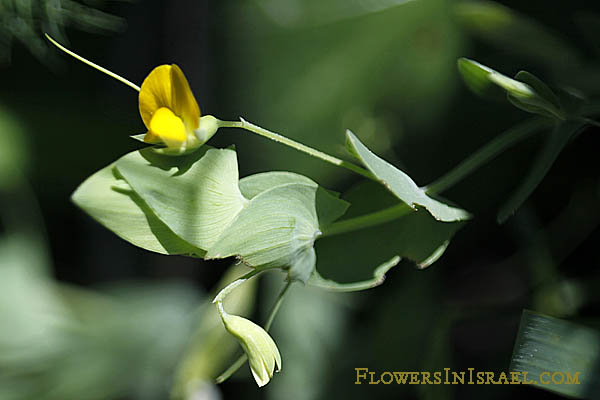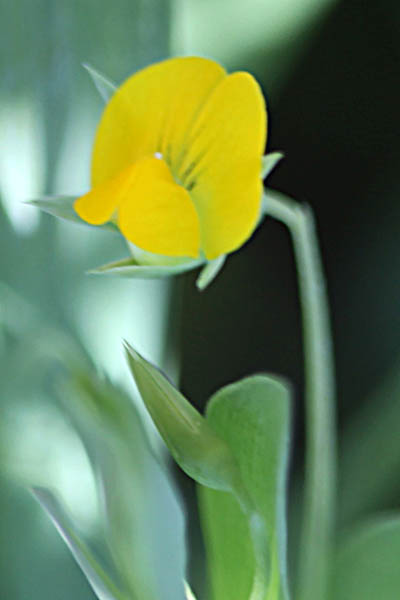yellow pea, yellow vetch,
Hebrew: טופח מצוי, Arabic: جلبان عفقة
| Scientific name: | Lathyrus aphaca L. | |
| Synonym name: | Aphaca vulgaris Presl., Lathyrus segetum Lam. | |
| Common name: | yellow pea, yellow vetch | |
| Hebrew name: | טופח מצוי | |
| Arabic name: | جلبان عفقة | |
| Family: | Fabaceae / Papilionaceae, פרפרניים |

Location: Givat-Hamoreh, Little Hermon - Nebi Dahi |
| Life form: | Annual, climber | |
| Stems: | 15-25 cm high; tendrils, stem not winged, glabrous | |
| Leaves: | Alternate, entire, smooth | |
| Inflorescence: | 1-2-flowered, axillary raceme | |
| Flowers: | Hermaphrodite, corolla, yellow | |
| Fruits / pods: | Legume, glabrous | |
| Flowering Period: | February, March, April | |
| Habitat: | Batha, Phrygana | |
| Distribution: | Mediterranean Woodlands and Shrublands, Semi-steppe shrublands, Shrub-steppes | |
| Chorotype: | Euro-Siberian - Med - Irano-Turanian | |
| Summer shedding: | Ephemeral |

Location: Givat-Hamoreh, Little Hermon - Nebi Dahi Derivation of the botanical name: Lathyrus, Greek lathyros, an old name for pea. aphaca, a city of Mount Lebanon, celebrated for a temple of Venus, situated between Byblus and Heliopolis or Baalbec. Aphaca is mentioned by Theophrastus, (Hist.Pl.I.viii.c.I); Pliny speaks of Aphaca as a wild plant (I.xxi.c.13); he also uses the words 'Amara aphace, (c.17). vulgaris, common. segetum, of the corn field(s). The Hebrew name: טופח, tophakh, Lathyrus.
|